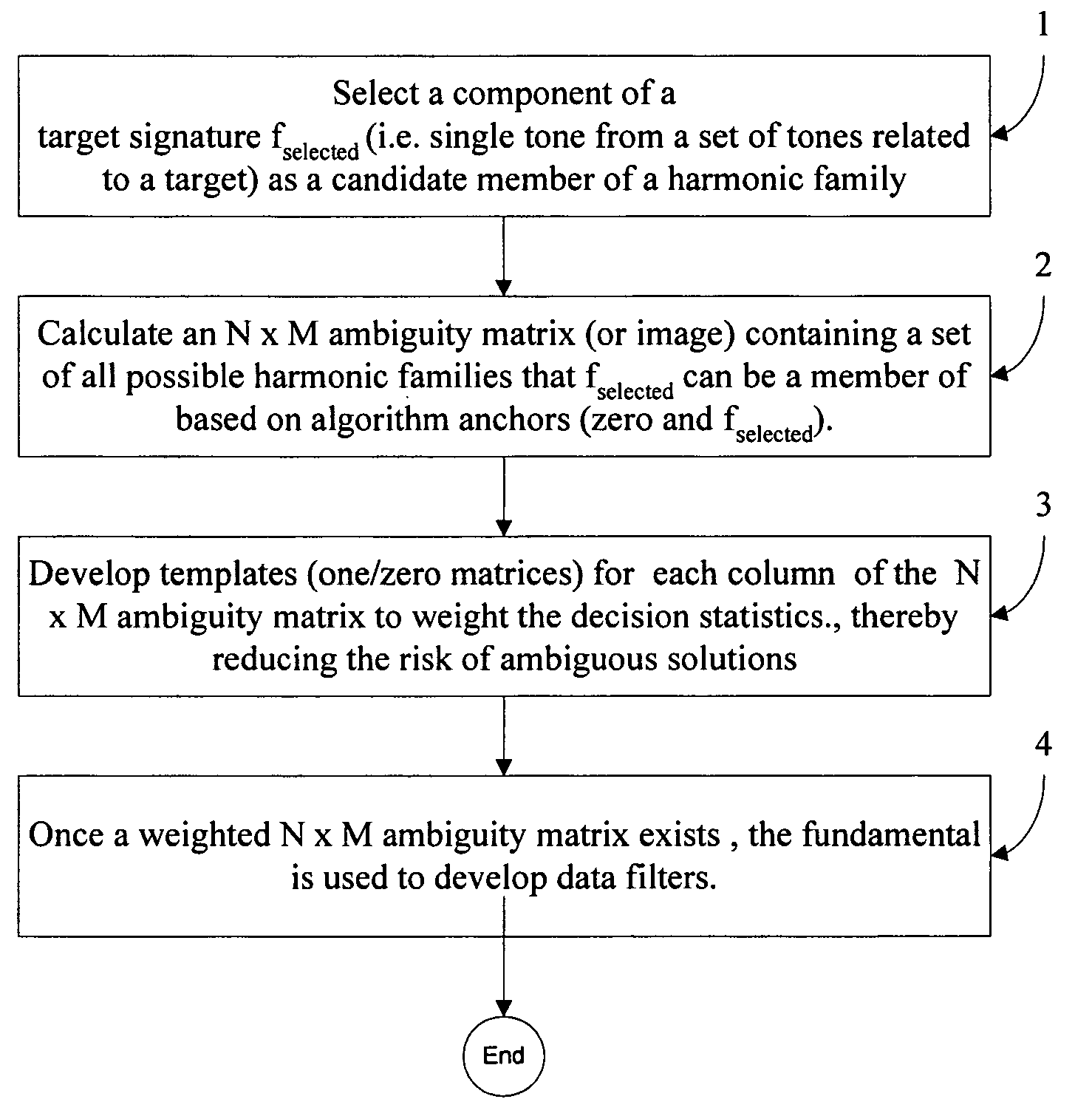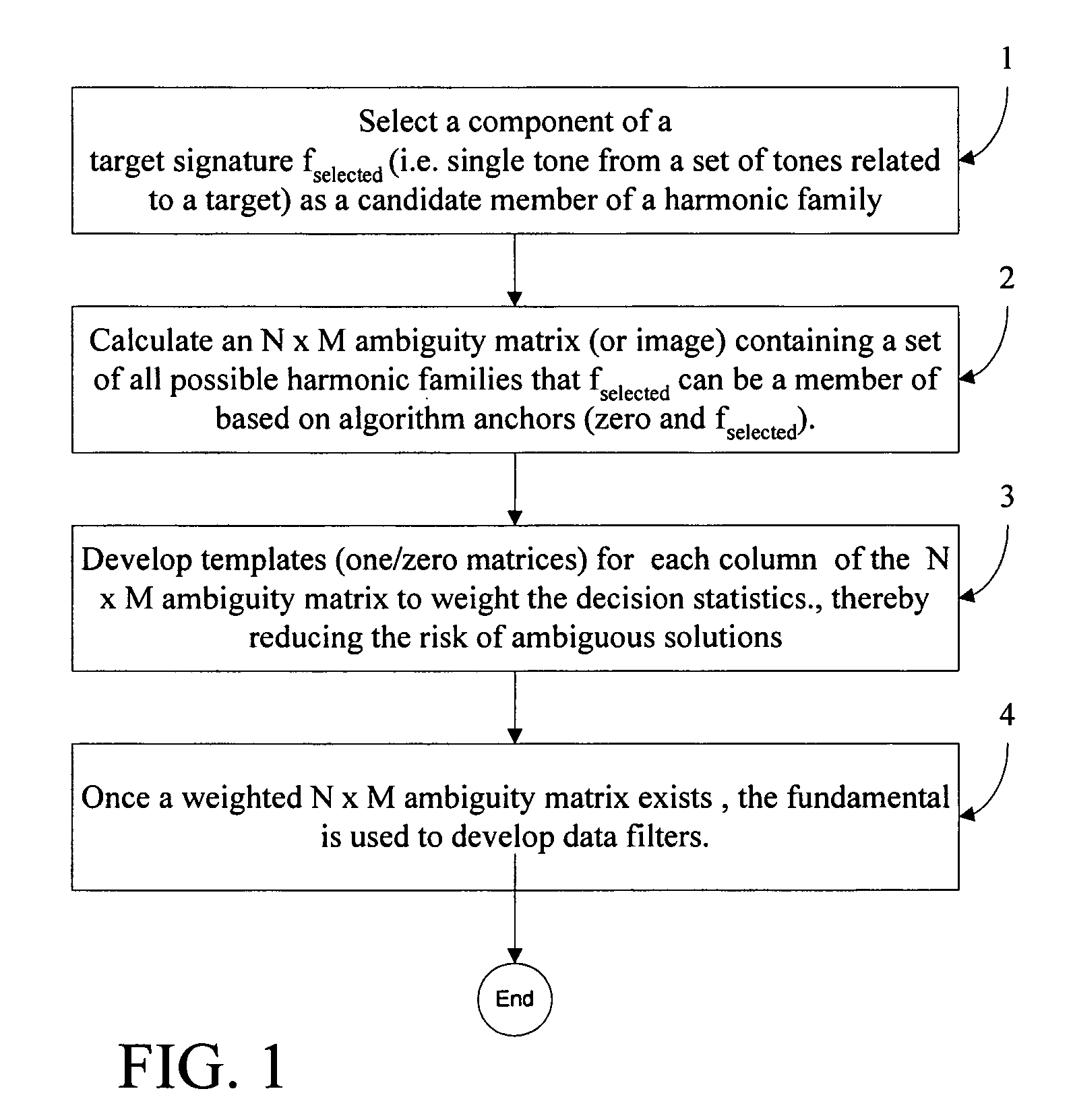Harmonic ambiguity resolver and inter array harmonic tracker
a technology of harmonic ambiguity and resolver, which is applied in the direction of direction finders, instruments, measurement devices, etc., can solve the problems of difficult to identify target signals amidst noisy signals, place significant constraints on the detection ability of conventional circuitry, and use energy from a single frequency for target detection, etc., to achieve the effect of improving tracking
- Summary
- Abstract
- Description
- Claims
- Application Information
AI Technical Summary
Benefits of technology
Problems solved by technology
Method used
Image
Examples
Embodiment Construction
[0020]Referring now to FIG. 1, there is shown a block diagram of the method for resolving harmonic ambiguity and inter-array harmonic tracking according to the present invention, which calculates a complete set of possible harmonic families given the automatic or manual selection of a target frequency from a frequency spectrum. The present method may be used to improve performance of a detection system such as a passive sonar system, for example, in which detected target signals are displayed to an operator. The method generally comprises the following steps:[0021]1) Select a component of a target signature fselected (i.e. single tone from a set of tones related to a target) as a candidate member of a harmonic family.[0022]2) Calculate an N×M ambiguity matrix (or image) containing a set of all possible harmonic families that fselected can be a member of based on algorithm anchors (zero and fselected).[0023]3) Develop templates (one / zero matrices) for each column of the N×M ambiguity...
PUM
 Login to View More
Login to View More Abstract
Description
Claims
Application Information
 Login to View More
Login to View More - R&D
- Intellectual Property
- Life Sciences
- Materials
- Tech Scout
- Unparalleled Data Quality
- Higher Quality Content
- 60% Fewer Hallucinations
Browse by: Latest US Patents, China's latest patents, Technical Efficacy Thesaurus, Application Domain, Technology Topic, Popular Technical Reports.
© 2025 PatSnap. All rights reserved.Legal|Privacy policy|Modern Slavery Act Transparency Statement|Sitemap|About US| Contact US: help@patsnap.com


